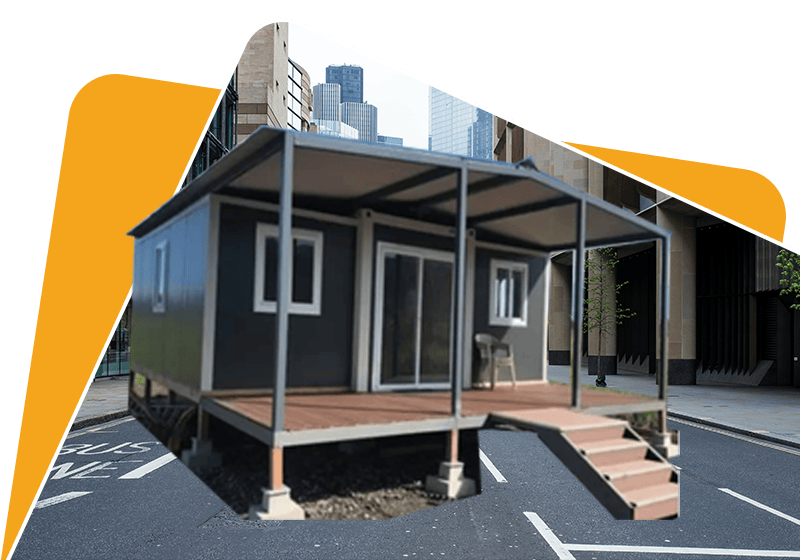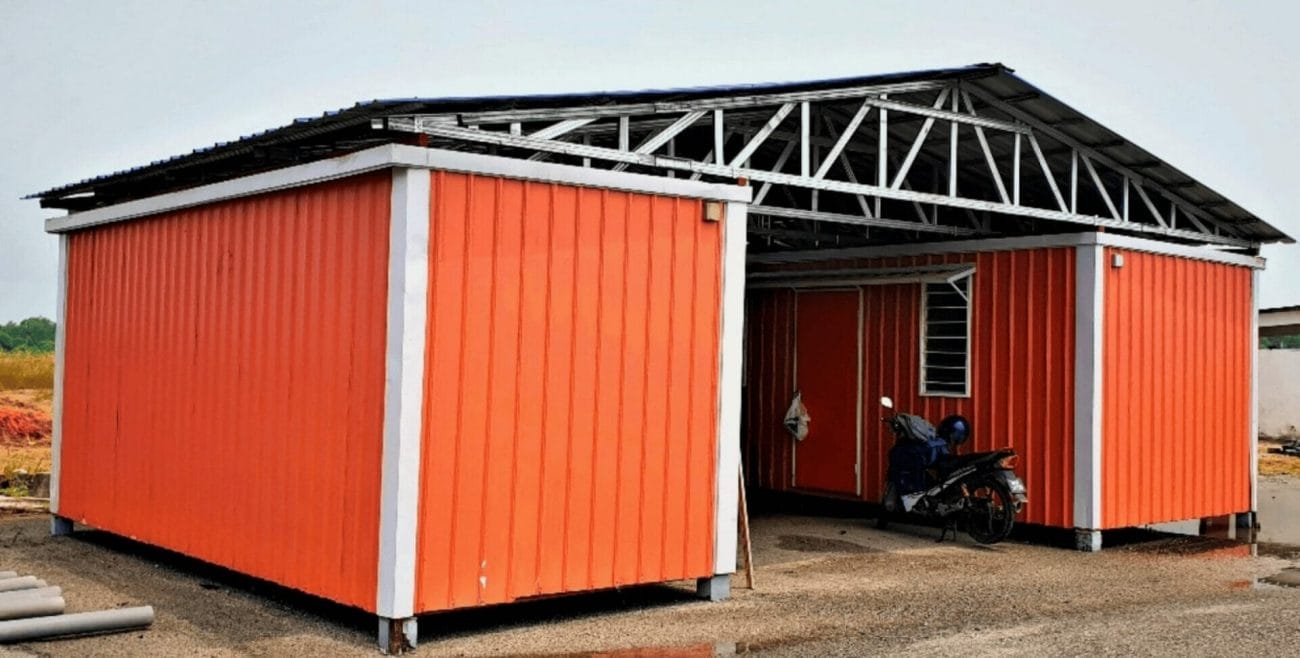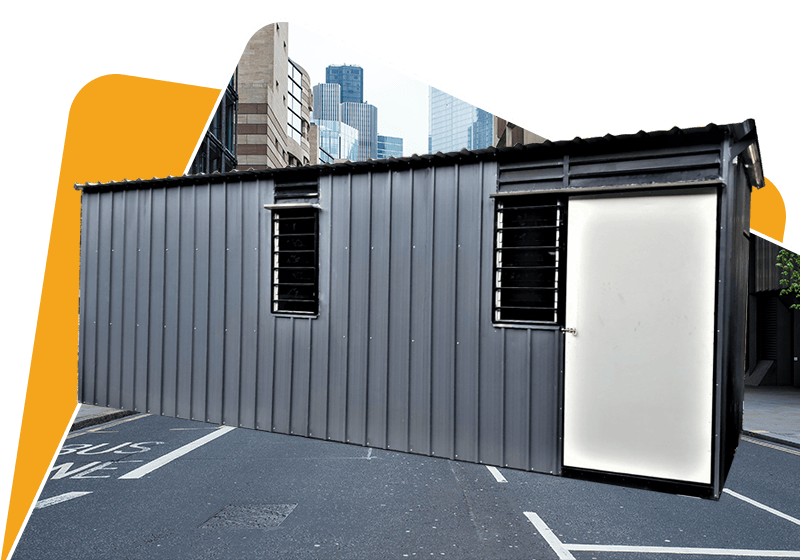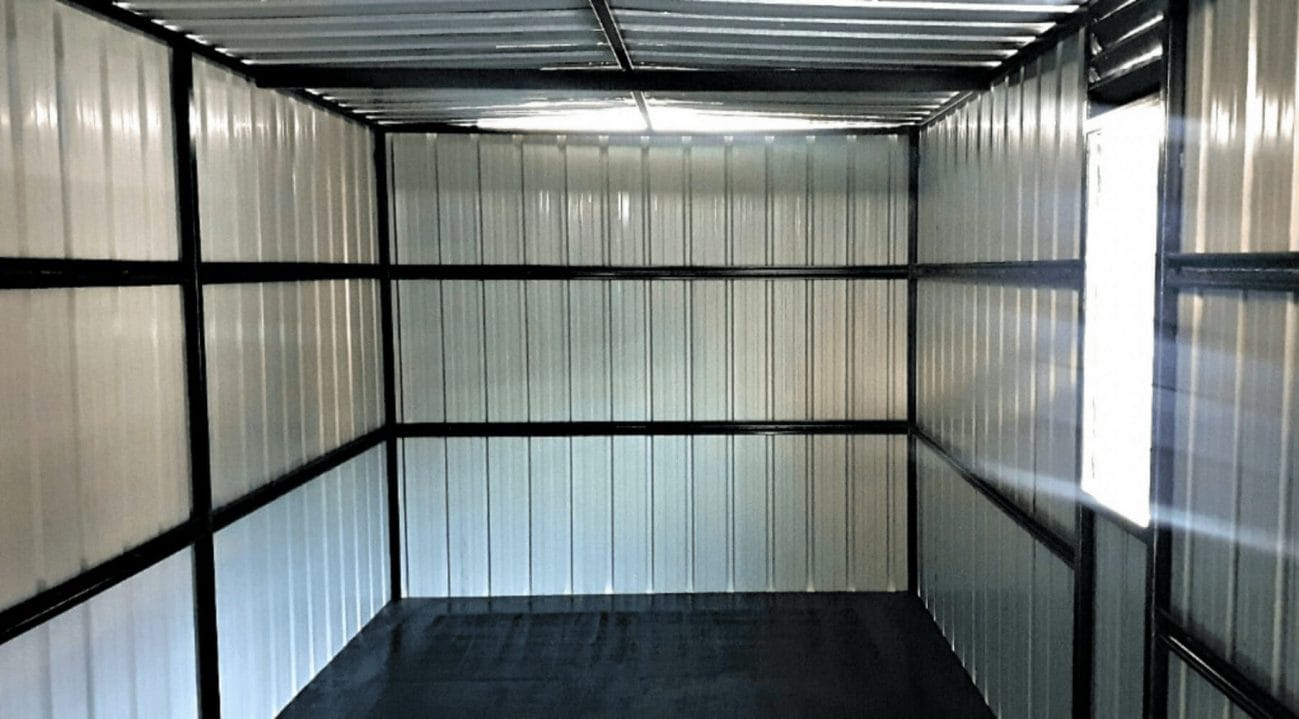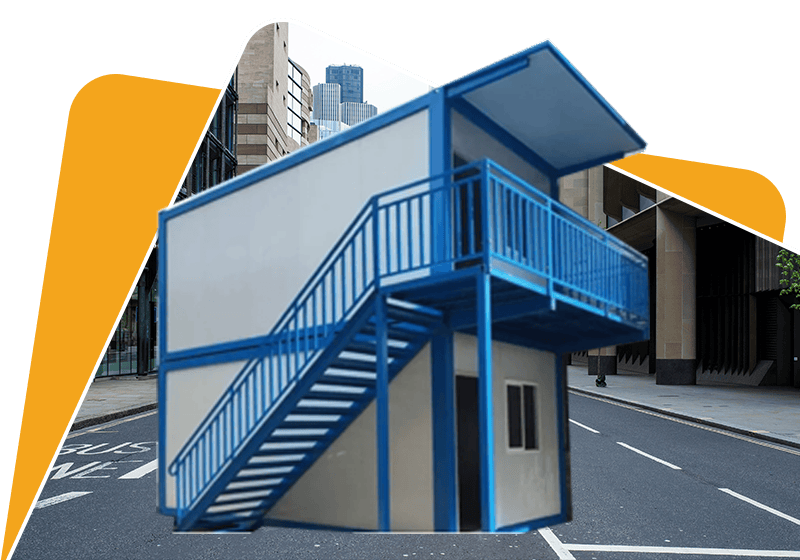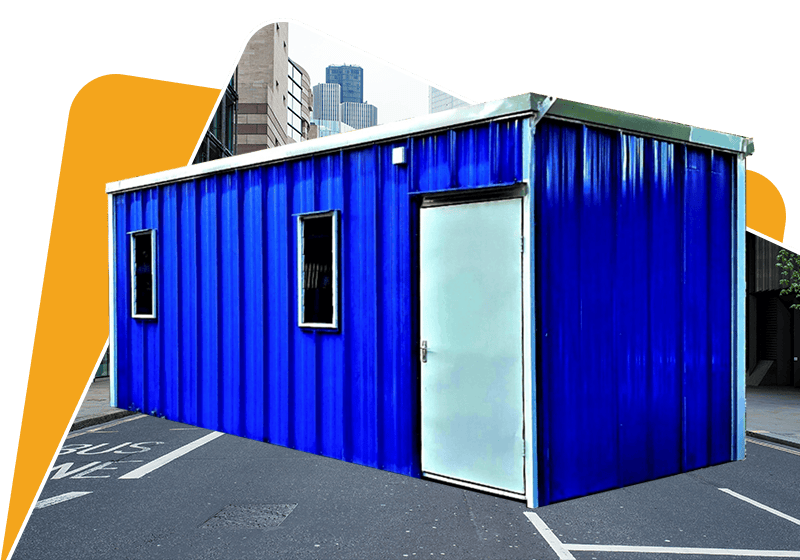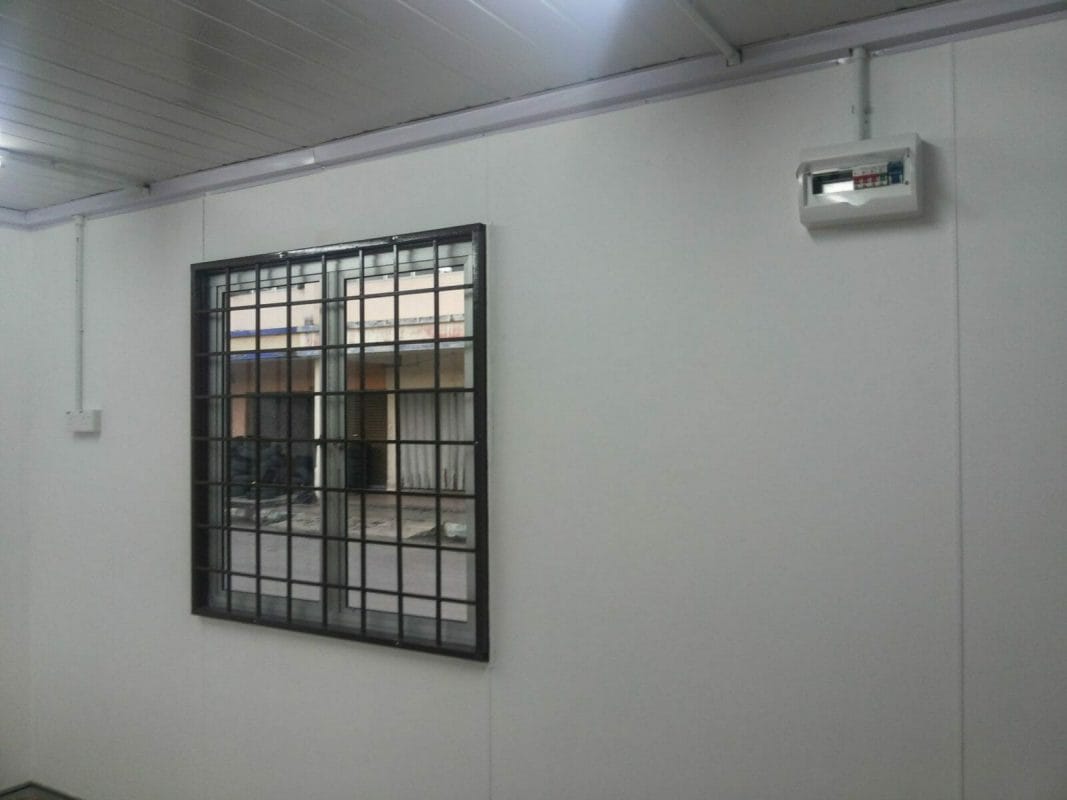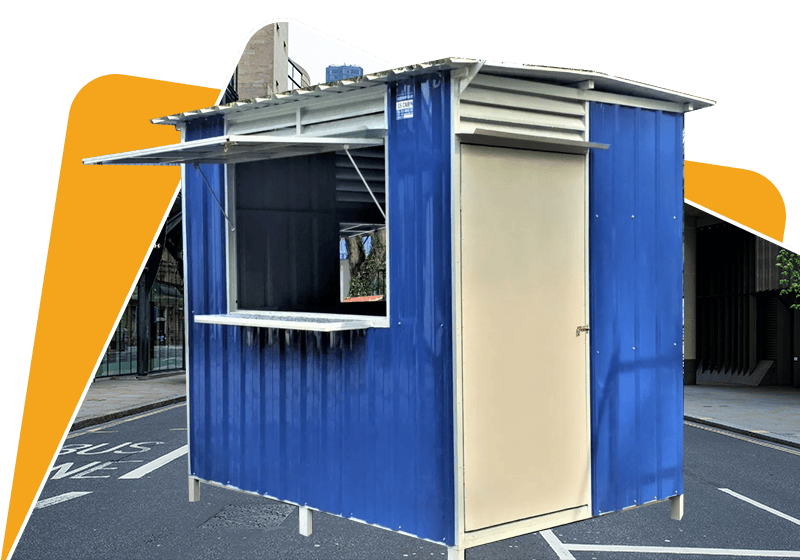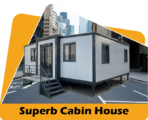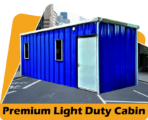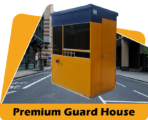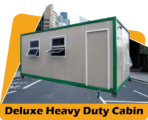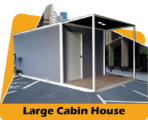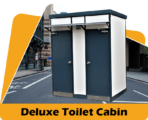10 Popular Questions About Kiosk Cabin

10 Popular Questions About Kiosk Cabin
- What are the benefits of using a kiosk cabin?
- What types of kiosk cabins are available?
- What should I consider when choosing a kiosk cabin supplier?
- How much does a kiosk cabin cost?
- What are the different kiosk cabin sizes available?
- How customizable are kiosk cabins?
- What kind of materials are kiosk cabins made from?
- How difficult is it to assemble and install a kiosk cabin?
- What kind of electrical and data connections do I need for my kiosk cabin?
- How can I make my kiosk cabin stand out and attract customers?
What are the benefits of using a kiosk cabin?
Kiosk cabins offer many benefits for businesses looking to have a retail or service presence in high foot traffic areas:
- Flexible and portable: Kiosk cabins are prefabricated structures that can be easily transported and installed in almost any location. This makes them perfect for setting up temporary shops, carts, and stands.
- Cost-effective: Buying a pre-made kiosk cabin is much more affordable than constructing a permanent retail space. There are many budget-friendly kiosk cabin options.
- Customizable: While kiosk cabins are pre-fabricated, they can often be customized with your own branding, colors, and features. This allows you to make your kiosk truly unique.
- Low maintenance: Made from durable materials like powder-coated steel, kiosk cabins don’t require much upkeep other than occasionally cleaning and touch-ups. You avoid high renovation and repair costs.
- Secure and protected: Kiosk cabins allow you to securely store your products, cash, and belongings when not operating. Doors and windows can be locked unlike open carts.
- Marketing opportunities: Kiosk cabins are eye-catching structures that attract attention to your business. You can use the exterior for branding and promotions.
- Flexible sizing: Kiosk cabins come in a range of sizes from just a few square feet up to hundreds. You can choose the right footprint for your location and needs.
- Quick to set up: Most kiosk cabins can be installed and ready to operate in one day or less. They connect to electricity quickly.
- Can operate year-round: Many kiosk cabin models come with climate control systems, fans, and heaters allowing you to work in any weather comfortably.
For any business that wants an affordable, customizable retail footprint, kiosk cabins offer many perks and benefits worth considering. The flexibility, ease of use, and cost-effectiveness make them a smart choice for many operators.
What types of kiosk cabins are available?
There are many different types of prefabricated kiosk cabins available to purchase to suit a range of business needs:
- Food kiosks: Designed for food service businesses, these have openings for counters and windows, storage space, ventilation, electrical outlets, and comply with health codes. Popular for coffee, ice cream, hot dog, and other food stands.
- Retail kiosks: Typically have glass storefronts, product display shelves, a sales counter, lighting, and secure storage for inventory and cash. Ideal for small retail stores.
- Service kiosks: Made for service businesses like ticket sales, bike rentals, lockers, and more. May have a service window or counter and space for conducting transactions.
- Cart kiosks: Portable kiosk cabins on wheels for mobile businesses. Usually more compact in size with the ability to tow or push to locations.
- Educational kiosks: Kiosks with interactive displays, monitors, and exhibit space for educational purposes like in museums, zoos, parks, etc.
- Medical kiosks: Designed for telehealth, blood pressure checks, health screenings, and other healthcare services in public spaces. Have privacy and medical equipment.
- ATM kiosks: Provide 24/7 access to ATM machines. Very secure with alarms, cameras, lighting, and high-grade locks. Located in public areas.
- Information kiosks: Display screens, brochure racks, and sometimes printers are built-in to provide information to people. Used at events, malls, parks, etc.
- Photo kiosks: Allow customers to print photos, documents, make photocopies, and more. Have payment systems, printers, and monitors built-in.
The right kiosk cabin depends on your specific business activities. Many suppliers offer customization to tailor the kiosk to your needs.
What should I consider when choosing a kiosk cabin supplier?
Selecting the right kiosk cabin supplier is key to getting a high-quality and functional kiosk for your business. Here are important factors to consider:
- Reputation & Reviews: Look for established companies with many positive customer reviews. This indicates they produce high quality kiosks and have good service.
- Kiosk Specialization: Some companies specifically specialize in kiosk manufacturing. They may offer more options and customization than general fabrication shops.
- Quality of Materials: Cabins made from powder coated steel, aluminum, and durable plastics will withstand weather and heavy use. Avoid wood or particleboard.
- Design Experience: Choose a supplier experienced in kiosk design to ensure it fits your needs whether for food service, retail, or other uses.
- Customization Options: Look for manufacturers that offer customized sizes, colors, branding, counters, shelving, electrical, and other options.
- Safety Certifications: For food or medical uses, the kiosk must comply with health codes and regulations which not all suppliers meet.
- Warranties: Multi-year warranties on kiosk materials and workmanship add assurance in case of any manufacturing defects.
- Assembly Services: Many companies offer professional assembly to install the kiosk at your location so it is ready to operate immediately.
- Maintenance & Repair Services: Some providers can service, update, and maintain your kiosk over its lifetime if needed.
- Pricing: Compare pricing between suppliers for the same specifications. Consider both purchase price and lifetime operating costs.
How much does a kiosk cabin cost?
Kiosk cabins range widely in price depending on size, materials, features, customization, and supplier. Here are some typical price ranges:
- Small cart-style kiosks: $500 – $2,000
- Compact 3′ x 3′ to 4′ x 4′ sizes
- Pre-fabricated or custom carts
- Limited features and basic construction
- Mid-size retail kiosks: $2,000 – $6,000
- 6′ x 6′ to 8′ x 8′ dimensions
- Powder coated steel or aluminum
- Include counters, displays, shelving, lighting
- Large food service kiosks: $6,000 – $12,000
- Up to 300 square feet
- Stainless steel counters and sinks
- Ventilation, fire suppression, utilities
- Customized kiosks: $10,000 – $40,000+
- Unique sizes, shapes, and designs
- Specialized for uses like photo printing
- Interactive technology integrations
Additional costs to factor in:
- Shipping/transportation fees
- Assembly and installation
- Signage and branding
- Permits, licenses, and site fees
- Electrical, plumbing, and ventilation work
Financing options are available including:
- Multi-year leasing agreements
- Loans and payment plans
- Rent-to-own arrangements
Working with a supplier on a total budget and financing is key to finding an affordable kiosk cabin solution. Advanced customization and larger sizes increase costs.
What are the different kiosk cabin sizes available?
Kiosk cabins come in a huge range of footprints and sizes to suit different business needs:
- Micro kiosks – 16 to 32 sq ft
- Compact standalone units like ATMs or vending machines
- Fit in small indoor and outdoor spaces
- Mid-size kiosks – 50 to 100 sq ft
- Accommodate 1-2 service counters and 1-2 employees
- Typically 6×6 to 8×8 dimensions
- Well-suited for carts, retail stores, food stands
- Large kiosks – 100 to 300 sq ft
- Full walk-in buildings with storage and seating
- Dimensions from 8×12 to 12×20
- Enable more products, inventory, appliances
- Jumbo kiosks – 300+ sq ft
- As large as small permanent buildings
- High capacity for storage, appliances, displays
- Used for major retail stores, restaurants
Shape and Design VarietyIn addition to size, kiosks come in different shapes:
- Square/rectangular
- Octagonal
- Round
- Triangular
- Custom shapes
Kiosks may have flat or pitched roof lines. Sidewalls can be solid, include windows/doors, or be open.Consider the footprint needed to operate comfortably along with any space constraints when selecting a kiosk size. Suppliers can tailor kiosks to unique size requirements through customization. Proper measurement ensures the right fit.
How customizable are kiosk cabins?
One major advantage of prefabricated kiosk cabins is that they can be highly customized to match specific business needs:
- Size – Kiosk dimensions can be adjusted to fit products, inventory, staff, etc. Non-standard lengths, widths, and heights can be accommodated.
- Layout – Interior layouts can be tailored including counters, cabinets, shelving, sinks, appliances, seating, and more.
- Materials – Kiosks can be built from steel, aluminum, plastic, glass, and other materials in different colors and finishes.
- Doors/Windows – The number, placement, size, and style of doors and windows can modified. Security bars, shutters, and bulletproofing are also options.
- Lighting – Interior and exterior lighting can be customized with different lamp types, placements, controls, and dimming.
- Branding – Graphics, logos, paint colors, and signage can be added to help your kiosk stand out.
- Technology – Kiosks can integrate monitors, touchscreens, sound systems, and other technology as needed.
- Accessibility – Ramps, wide doors, lowered counters, and other accessible features can be incorporated.
- Climate Control – Heating, air conditioning, ventilation, and fans can be installed for any weather.
- Utilities – Electrical, plumbing, gas lines, and data/internet connectivity can be customized.
Working closely with your kiosk supplier to modify the base design is key. The more detailed your specifications, the better the final product will match your vision. Customization does often increase cost.
What kind of materials are kiosk cabins made from?
Kiosk cabins are constructed from durable, low-maintenance materials that can withstand heavy use and outdoor weather exposure:
- Powder Coated Steel – The most common kiosk material. Steel with a baked-on paint finish that resists chipping and corrosion. Sturdy and fireproof. Available in many colors.
- Aluminum – Lightweight, rust-proof, and strong. Easy to repair. More expensive than steel but still popular for kiosks.
- Plastics – Plastic panels made from PVC, acrylic, polycarbonate or fiberglass reinforced plastic (FRP). Offer transparency options.
- Concrete – Pre-cast concrete slabs can form kiosk walls. Very durable but heavy and permanent.
- Wood – Sometimes used for ornamental kiosk designs but not optimal for outdoors due to weathering.
- Glass – Glass walls, windows, or doors provide views inside the kiosk. Often used with other materials for accents.
- Stainless Steel – Used for food kiosks since it resists corrosion, bacteria, and stains. More expensive but very sanitary.
Kiosk Roofing Materials:
- Metal roofing panels
- Fiberglass
- Asphalt shingles
- PVC roof membrane
Avoid wood-based products like particle board as they deteriorate quickly outside. Discuss material options with your kiosk supplier depending on durability needs, cost, weight, and aesthetics.
How difficult is it to assemble and install a kiosk cabin?
One advantage of prefabricated kiosk cabins is that they are designed to be easy to deliver, assemble, and install:Delivery
- Kiosks are transported disassembled on trucks and trailers to fit through roads and property access points.
- Smaller kiosks can be towed fully assembled.
- A clear route from the truck to the site is needed to avoid obstructions.
Assembly
- Kiosk pieces bolt together through pre-drilled holes and connections. Minimal tools are needed.
- Larger kiosks may take 2-3 people up to 2 days to assemble all the components.
- Detailed instructions are provided by the manufacturer. Previous construction experience is helpful.
- Some suppliers offer professional assembly so the kiosk arrives ready to use.
Installation
- The assembled kiosk must be safely secured to its foundation using anchors or tie-downs.
- Hooking up electrical, plumbing, and other utilities may require professional assistance.
- Any permits for the structure also need to be obtained beforehand.
- Concrete slabs make the most secure base, but pavers, pads, or directly on the ground are other options.
With proper equipment, manpower, and preparation, most prefab kiosks can be installed in just a matter of days. Seek help from the supplier or contractors if the scope exceeds your team’s abilities. Proper assembly is critical for safety and performance.
What kind of electrical and data connections do I need for my kiosk cabin?
Operating technology and appliances in your kiosk cabin will require setting up the right electrical and data infrastructure:Electrical
- Most kiosks need 120/240V AC power hooked up from the electric grid, a generator, or potentially solar panels.
- The electrical load determines the outlet amperages and circuit breakers required. High-demand equipment necessitates more power.
- Both interior and exterior outlet placement should be planned based on equipment locations.
- Interior lighting, appliances, HVAC systems, and POS systems need to be wired and connected.
- For outdoor kiosks, weatherproof outlets, conduits, and panels are essential.
Data/Internet
- Ethernet cabling provides the most reliable hardwired internet connectivity. Fiber optic is best for speed.
- WiFi routers with external antennas can broadcast strong wireless signals if cabling is not feasible.
- Telephone landlines may be needed for certain systems like alarms and payment terminals.
- Point-to-point wireless bridges can connect to remote internet sources.
- Cellular modems/hotspots are an option but may be less reliable.
Consult electricians and low-voltage contractors early in the planning process to specify the required electrical and data infrastructure. Permits, inspections, and local codes must be followed. Outages will disrupt business operations.
How can I make my kiosk cabin stand out and attract customers?
A creative, eye-catching kiosk cabin design is key to driving customer traffic and sales. Consider these tips:
- Visual Impact – Use bold colors, materials, graphics, and shapes to grab attention. Signage should be prominent and readable from afar.
- Lighting – Use external lighting to illuminate and accentuate the kiosk at night. Interior lighting also adds visual interest after dark.
- Branding – Include logos, slogans, and colors to reinforce your brand identity. Paint, wraps, and digital displays are great for branding.
- Interactivity – Touchscreens, sound, video, and other interactive elements make the kiosk engaging and fun for customers.
- Promotions – Special offers, giveaways, and contests advertised on the kiosk exterior attract interest. Digital displays can promote daily specials.
- Landscaping – Plants, flowers, fencing, and other landscape elements help the kiosk feel welcoming and complete.
- Location – Site your kiosk in high foot traffic areas with maximum visibility at events, malls, parks, etc.
- Exceptional Service – A friendly staff providing quick and excellent customer service inside the kiosk will build a loyal following.
- Uniqueness – Incorporate something about your kiosk that competitors don’t offer to stand out like customization, products, or technology.
With smart design choices and positioning, your kiosk cabin can become a magnet for customer attention and traffic. This drives profitability for your business.
Key Takeaways
- Kiosk cabins provide flexible and cost-effective retail footprints with many customization options.
- Choosing kiosk materials like steel, aluminum, and plastic ensures durability for outdoor use.
- Suppliers offer kiosks in a wide range of sizes from compact carts to jumbo retail spaces.
- Experienced kiosk manufacturers can customize to specific business needs like food service or interactive technology.
- Proper electrical, lighting, and internet connectivity enables kiosks to power appliances, systems, and devices.
- With striking design and prime locations, kiosks attract attention and foot traffic to boost sales.
Conclusion
- Prefabricated kiosk cabins allow businesses to quickly set up retail or service operations in almost any location.
- They offer affordable and customizable spaces that can be tailored to specific needs.
- By choosing the right size, materials, and features kiosks can withstand heavy use and weather while meeting business goals.
- With smart planning and design, kiosk operators can maximize their visibility and customer engagement using these versatile structures.
- Connecting with an experienced kiosk supplier ensures acquiring a high-quality solution that aligns with your budget and requirements.
Kontraktor Rumah Kabin
Rumah Kabin Murah
Rumah Kontena Vs Rumah Kabin
Rumah Kabin Pasang Siap
Senarai Harga Kabin di Malaysia
Heavy Duty Cabin
Light Duty Cabin
The post 10 Popular Questions About Kiosk Cabin appeared first on Kontraktor Bina Rumah Kabin.


